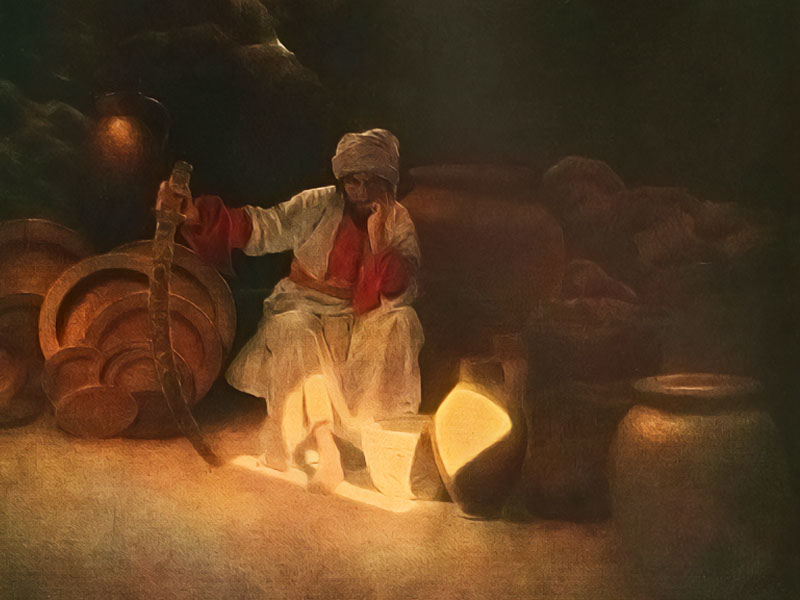The Characteristics and Structure of Narratives in the Folklore of the Arabian Gulf
Issue 56

Dr. Hussam Rashad Al-Ahmad
Because the desert is fertile ground for legends and Bedouins enjoy talking around fires in the evenings, their minds and hearts are filled with tales and Gulf folk literature is rich in stories and characters.
Several features distinguish desert stories from other folk literature, both in terms of the characters featured and their content. These characteristics represent the various roles that the narrative gives each character throughout the story. The characters in desert tales are mythical creatures with defined functions within a story or tale, for example: Abu Dreya, jathom, Abu Mogwe, and Al-Da'i.
When it comes to content, most of the Arabian Gulf’s myths and legends focus on discouraging children, women, or men from engaging in certain actions. The engagement of women in the creation of Gulf folklore and legends is another point that was noted.
The virtues of righteousness, honesty and beauty were glorified in heroic tales and folktales such as the narrative "Nitif Nitifan" and others. The folktales’ richness and the multiplicity of their types and branches make it a national duty to preserve them. This will require concerted individual and institutional efforts, such as those required in the preparation, coordination and editing of Dr. dheya Al Kaabi’s "Encyclopaedia of Bahraini Folk Tales: A Thousand and One Stories"
In 2007, Bahraini poet Ali Abdullah Khalifa came up with the idea for the encyclopaedia. He drew the attention of Dr Dia' Al-Kaabi, who is interested in narratives, to the lack of documentation of Bahraini folktales despite their richness and creative diversity. He emphasised the importance of transcribing Bahraini folktales in local dialects rather than in the classical standard language in order to preserve the oral narration.
The largest resource for folktales in the Arab world was created thanks to Ali Abdullah Khalifa’s idea and the efforts of Dr Al-Kaabi in collaboration with the Folk Culture Foundation for Studies, Research and Publishing, the International Organization of Folk Art (IOV), and the University of Bahrain. Professors, students, intellectuals and lovers of folklore and history also contributed to the success of this massive project. It took 10 years and 100 students worked to conduct surveys, transcribe and verify traditional stories from 1,200 male and female narrators ranging from 50 to 82 years of age throughout Bahrain's villages and cities.
Without a doubt, school is the most recognised and important institution that should be concerned with folk literature. The curriculum must include multiple books on folk literature to preserve national identity and enhance children's heritage values. Children are more likely to accept orders and appeals delivered in the form of literature, especially poetry, proverbs, and stories, than those delivered in the form of commands and rules. One of the most important features of folk literature is that it is interesting and, because it is more akin to children’s everyday language and it includes creative images, it is natural that children are more inclined to folk literature than to serious literature. Thus, we can rely on folk literature to provide a foundation for the imagination and a holistic view of the world that will encourage children to be creative.
In addition to the fact that folk literature is a form of national identity that must be preserved, folk literature, and folktales in particular, can be used to motivate people – especially children – to overcome difficulties. They can also be used as tools to improve communities’ morals because they promote values such as nobility, truth and self-discipline.







































































